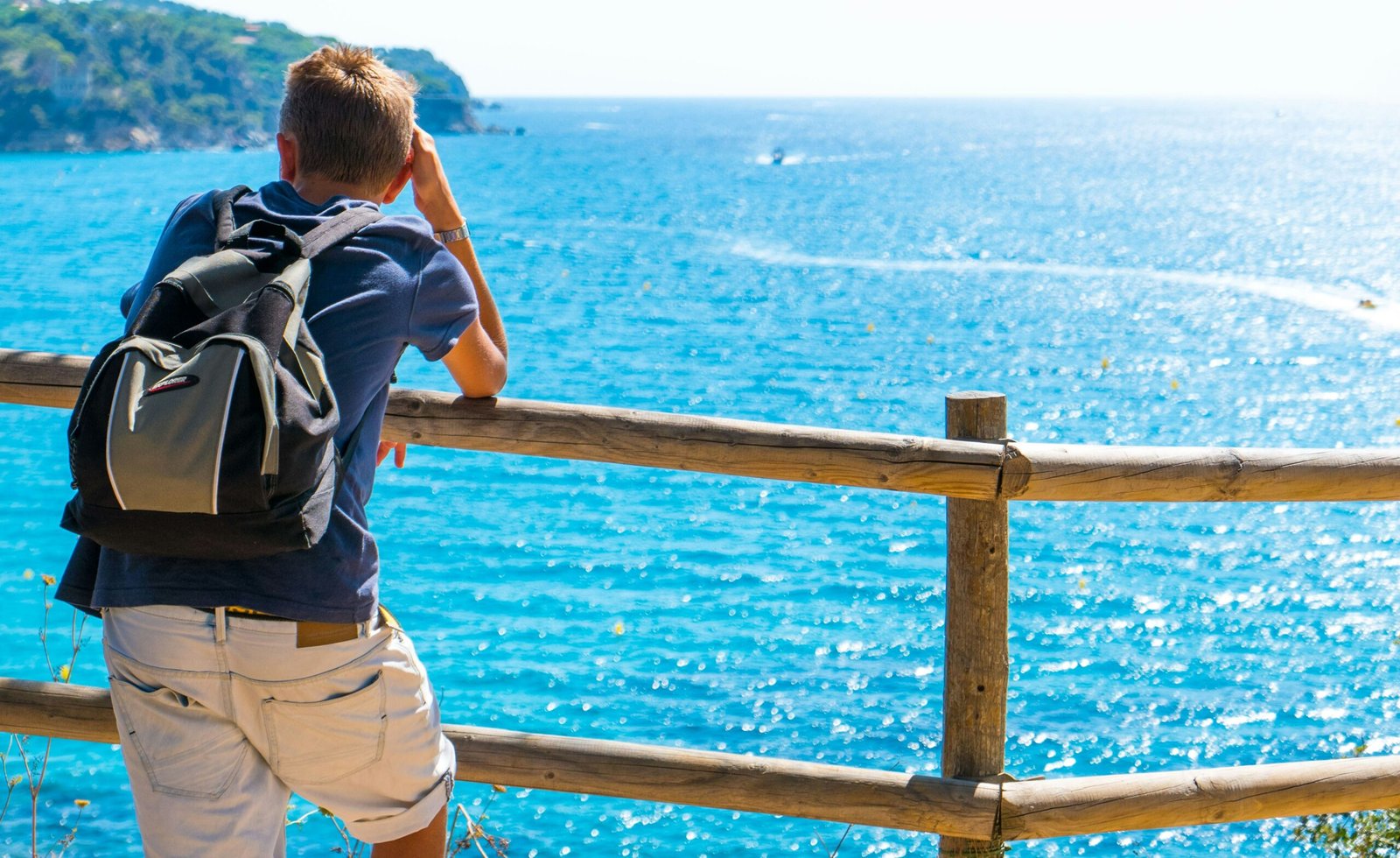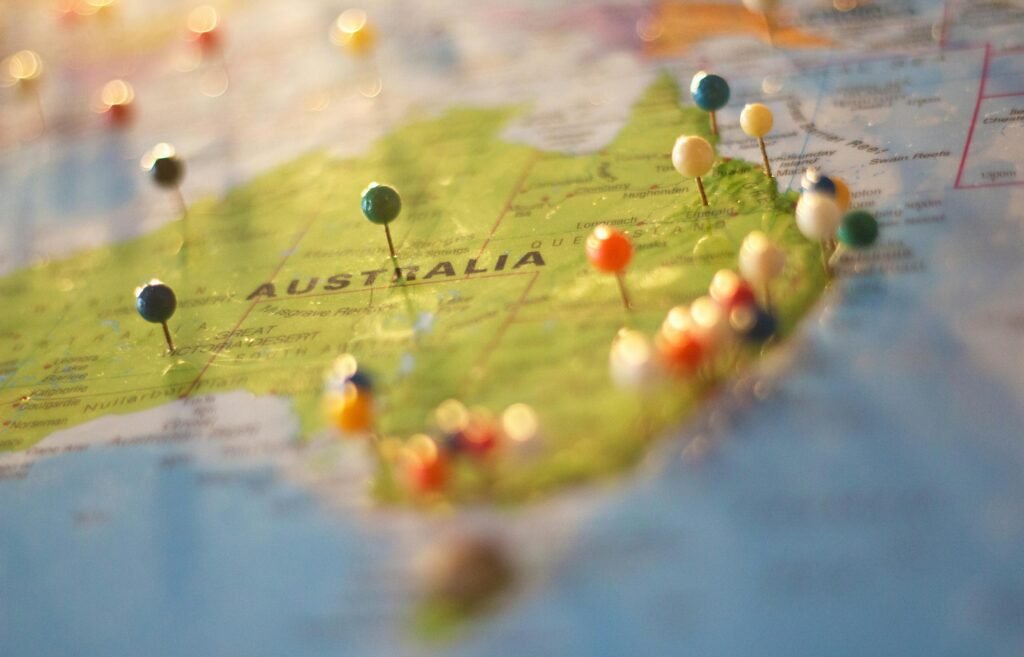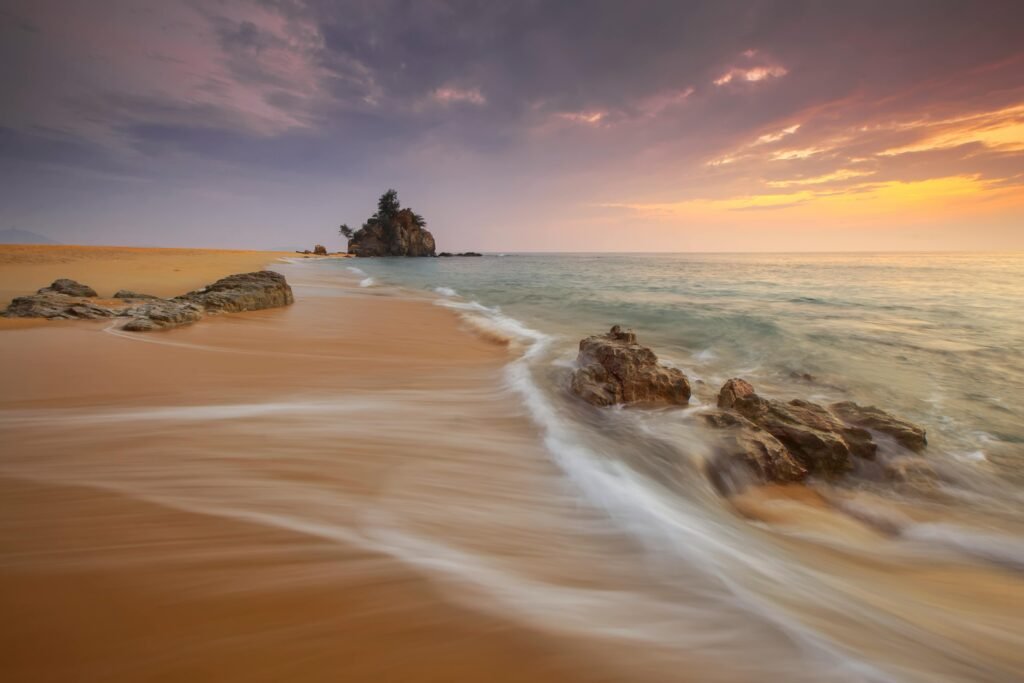Introduction to Backpacking in Oceania
Oceania, a vast expanse of islands and landmasses spanning the Pacific Ocean, presents a breathtaking array of landscapes and cultures for backpackers. This region comprises numerous countries, with Australia and New Zealand being particularly prominent on the backpacking map, supplemented by the stunning Pacific Islands such as Fiji, Samoa, and Vanuatu. Each destination offers its unique charm, captivating travelers with its rich biodiversity and vibrant local cultures.

The appeal of backpacking in Oceania is profound, as it combines natural beauty with cultural diversity. From the majestic Great Barrier Reef in Australia to the geothermal wonders of Rotorua in New Zealand, the region showcases an impressive variety of terrains. This diversity extends beyond physical landscapes; it also encompasses a rich tapestry of cultures influenced by indigenous populations and colonial histories. Travelers can immerse themselves in traditional ceremonies, sample local culinary delights, and engage with communities, making the experience more enriching.
Budget travelers find Oceania especially attractive due to a combination of factors. While some may perceive it as an expensive destination, there are countless ways to explore the region economically. Budget accommodations, such as hostels and campgrounds, provide conducive environments for meeting fellow travelers and making lasting connections. Additionally, local transportation options, including buses and ferries, allow for exploration without hefty costs. Emerging online platforms also facilitate access to affordable food and experiences, enabling travelers to enjoy all that Oceania has to offer without a hefty price tag.
In essence, Oceania captivates backpackers with its alluring mix of natural wonders, cultural richness, and accessible travel options. For those seeking adventure while being mindful of their budget, this region serves as a compelling and diverse destination. The adventure begins with an exploration of what each locale has to offer, promising memorable experiences and discoveries.
Best Time to Visit Oceania
Backpacking in Oceania offers a unique opportunity to explore a vast array of landscapes, cultures, and experiences. However, selecting the best time to visit this region is pivotal for maximizing enjoyment while minimizing costs. Oceania encompasses several countries and territories with varied climatic conditions, and understanding these differences can help travelers make informed decisions. Generally, the best time for backpacking in Oceania spans from May to September, which corresponds to the cooler, drier months for many areas.
In Australia, winter (June to August) allows travelers to experience the diverse landscapes without the intense heat of summer. Coastal regions such as Sydney and Brisbane offer milder temperatures, making it ideal for beach activities and exploration. Additionally, visiting during this period often results in lower accommodation prices and fewer crowds at popular destinations.
New Zealand offers captivating scenery year-round, but spring (September to November) is particularly enchanting. This season showcases blooming flora and moderate weather, perfect for hiking and outdoor adventures. Moreover, spring hosts various local festivals, providing a rich cultural experience. Conversely, the Pacific Islands, including Fiji and Samoa, experience their dry season from May to October, which not only brings excellent weather but also ensures abundant marine life, making it perfect for snorkeling and diving.
It is important to note that major events, such as the Sydney New Year’s Eve fireworks or the Melbourne International Comedy Festival, draw large crowds and can inflate prices. Thus, planning around these seasons and events will enhance the overall backpacking experience while remaining budget-friendly. Understanding the climatic variations across Oceania allows backpackers to choose their travel dates wisely to have a remarkable journey while taking advantage of favorable weather and lower travel expenses.

Budgeting Your Trip: Transportation Tips
When embarking on a backpacking journey across Oceania, budgeting for transportation forms a crucial part of your overall travel plan. The region’s vast landscapes and islands offer various transport options, including buses, trains, ferries, and budget airlines, each with its unique benefits and price points. Understanding which modes of transport suit your itinerary not only enhances your travel experience but also helps keep costs manageable.
For land travel, utilizing buses can be one of the most economical choices. Many countries in Oceania, including Australia and New Zealand, have extensive bus networks connecting major cities and tourist attractions. Companies like Greyhound Australia and InterCity New Zealand frequently offer discounts for advanced bookings, so it’s advisable to reserve your seats ahead of time. Moreover, passenger loyalty programs or bus passes for multiple trips can lead to additional savings.
Train travel in Oceania can be a unique experience, providing scenic routes that might not be accessible by other means. Although train services are typically more limited compared to buses, they can be a cost-effective option if you plan your journey carefully. Look for special promotions or passes that permit unlimited travel for a set period to maximize savings.
Ferries are essential for island hopping throughout Oceania. Services such as the Spirit of Tasmania or the various ferry options in Fiji link popular destinations. Pricing can vary considerably, so researching schedules and booking in advance can yield significant savings.
For longer distances, budget airlines like Jetstar and Virgin Australia frequently offer competitive fares, especially if you book several weeks ahead of your departure date. Monitoring fare comparison websites and subscribing to airline newsletters can help you snag the best deals.
Overall, remaining flexible with your travel dates and being open to different transportation methods can provide considerable savings while exploring the mesmerizing landscapes of Oceania.
Affordable Accommodation Options
When embarking on a backpacking adventure through Oceania, finding budget-friendly accommodation options is key to keeping expenses manageable while enjoying the diverse landscapes and cultures this region has to offer. Numerous choices cater to various traveler preferences, from hostels and guesthouses to camping sites and Couchsurfing. Each option provides unique experiences that allow you to connect with fellow travelers and immerse yourself in local environments.

Hostels are a popular choice among backpackers, offering dormitory-style rooms and social atmospheres conducive to meeting other travelers. Cities like Sydney and Auckland are home to a variety of hostels that not only provide affordable rates but also host communal activities, allowing for easy opportunities to mingle. Many hostels also offer private rooms at competitive prices, making them versatile options for different group sizes and preferences.
Guesthouses, often family-run, provide a more intimate experience while still being budget-friendly. They are typically less expensive than hotels and can be found in both urban and remote areas. Many guesthouses also serve traditional meals, which allows visitors to experience local cuisine, further enriching the travel experience. Furthermore, in more rural areas, camping sites provide a chance to connect with nature and often feature lower fees. Travelers can explore national parks or beautiful coastal areas while enjoying the benefits of outdoor living.
Couchsurfing is another excellent way to save money on accommodation while gaining insights into local life. This platform connects travelers with hosts willing to offer a spare couch or room for free. By participating in this community, backpackers can not only avoid accommodation costs but also develop authentic friendships and receive firsthand recommendations on the best local experiences. To maximize savings during peak seasons, be sure to book accommodations early and consider staying a bit off the beaten path, as prices tend to be lower in less tourist-centered regions.
Eating on a Budget: Food Options in Oceania
When backpacking through Oceania, finding affordable dining options is essential for managing expenses while still enjoying the region’s diverse culinary offerings. Numerous budget-friendly eateries, vibrant street food markets, and local grocery stores provide ample opportunities to savor the local cuisine without breaking the bank.
One excellent way to experience local flavors at a low cost is by visiting street food markets, commonly found in urban areas such as Sydney, Auckland, and Wellington. Vendors often sell an array of delicious options such as meat pies, fish and chips, and tropical fruits. These markets not only provide tasty meals but also create a vibrant atmosphere, making it easy to socialize with fellow travelers and locals alike.
In addition to street food, various budget-friendly restaurants and cafés cater to those traveling on a tight budget. For instance, many Asian establishments offer excellent value, serving flavorful dishes like pho, sushi, and dumplings at reasonable prices. Additionally, local pub lunches or happy hour specials can provide filling meals at a fraction of the cost of dining at more upscale restaurants.
For those who prefer to cook their meals, grocery stores such as Countdown in New Zealand or Woolworths in Australia offer a range of affordable products. Purchasing staple items like rice, pasta, and vegetables can help travelers prepare wholesome meals on the go. Furthermore, utilizing hostel kitchens or communal cooking spaces can create an enjoyable atmosphere for sharing culinary experiences with fellow backpackers.
It is also beneficial to embrace the cultural food customs unique to each location visited in Oceania. Participating in communal dining or trying local dishes, such as a traditional hangi in New Zealand, can provide memorable experiences while indulging in budget-friendly meals. By thoughtfully selecting where to eat and incorporating cooking into their travels, backpackers can experience the richness of Oceania’s culinary scene without overspending.
Free and Low-Cost Activities to Enjoy
Exploring Oceania does not have to strain your wallet, as the region teems with free and low-cost activities for travelers seeking meaningful experiences. From stunning natural landscapes to rich cultural events, there are ample opportunities to enjoy Oceania on a budget.
Outdoor enthusiasts can take advantage of the numerous hiking trails available throughout the region. Countries such as New Zealand offer breathtaking walks like the Tongariro Alpine Crossing, which is free and takes adventurers through volcanic terrain. In Australia, the Blue Mountains presents a variety of trails that are accessible to all skill levels, allowing you to relish in the natural beauty without the need for a guided tour. Other popular regions for hiking include Tasmania and New Caledonia, where scenic landscapes and diverse ecological systems await.
Beach visits are another inexpensive way to experience Oceania’s allure. Many locations, including Fiji, the Cook Islands, and parts of Australia, boast pristine beaches that are completely free for visitors. Whether you prefer basking in the sun on a sandy shore or engaging in water sports like snorkeling and swimming, these beaches provide a perfect setting to unwind and soak in the vibrant oceanic culture.
Additionally, free cultural events often take place in urban areas, showcasing local art, music, and cuisine. Cities such as Auckland and Wellington frequently host outdoor festivals, markets, and exhibitions that celebrate the spirit of the region. Engaging with locals at these events is an excellent way to immerse yourself in the culture and gain a deeper understanding of Oceania’s heritage.
For those looking for low-cost tours, consider exploring local attractions like museums or wildlife reserves, which often have reduced entry fees or free days. Researching such options in advance can lead to fantastic experiences that won’t break the bank, ensuring you enjoy Oceania’s beauty and charm without overspending.
Essential Gear and Packing List for Budget Travelers
When embarking on a backpacking adventure in Oceania, having the appropriate gear is crucial for ensuring a comfortable and enjoyable experience, especially for budget travelers. The key is to choose lightweight, multifunctional items that will save both space and costs.
Starting with the backpack itself, select a durable and water-resistant option with a capacity of 50 to 70 liters. This size is ideal for carrying your essentials without overpacking. Opt for a comfortable frame and adjustable straps to support long treks. It is advisable to invest in a sturdy pair of hiking shoes, as they will offer better support and protection when navigating diverse terrains.
In terms of clothing, layering is essential. Opt for moisture-wicking base layers, an insulating mid-layer, and a waterproof jacket that weighs little but provides protection against unpredictable weather conditions. Choose quick-drying fabrics to ensure your clothes remain comfortable after being exposed to rain or sweat. Don’t forget to pack versatile pieces such as convertible pants that can turn into shorts and a lightweight scarf that can serve multiple purposes.
Regarding travel accessories, a compact, portable water filter or purification tablets are vital to staying hydrated without incurring extra expenses on bottled water. A lightweight sleeping bag rated for the local climate will enhance comfort during camping or hostel stays. Include a travel towel made from quick-dry fabric for easy storage and maintenance.
Practical items such as a multi-tool, first aid kit, and a small, collapsible daypack for day hikes are also important. These items add a layer of convenience without taking up significant space. Lastly, keep electronic devices minimal; a smartphone can often double as a camera and navigation tool, providing both functionality and savings.
Safety Tips and Travel Insurance Considerations
Backpacking across Oceania can be a thrilling and enriching experience, but it is essential to prioritize safety throughout your journey. Travelers should remain vigilant and informed about common safety concerns in the region. One primary consideration is understanding local customs and norms, as behavior considered acceptable in one culture may be frowned upon in another. Always research the areas you plan to visit, including any potential risks such as theft, political unrest, or natural disasters. Familiarizing yourself with emergency contacts—like local authorities and hospitals—can also be beneficial in any unforeseen situations.
Avoiding scams is another pivotal aspect of maintaining safety while backpacking in Oceania. Tourists can often be targets for various scams, ranging from overpriced services to outright theft. To protect yourself, always verify the reputation of service providers and use official channels whenever possible, such as registered taxi services or verified tour operators. Engaging with fellow travelers and locals can grant insight into any prevalent scams in the region, helping you stay informed and cautious.
The importance of travel insurance for backpackers cannot be overstated. Whether you are going to be hiking in national parks, snorkeling in coral reefs, or even engaging in adventurous activities, having the right travel insurance policy is critical. Look for plans that cover medical emergencies, trip cancellations, and loss of belongings. When selecting a policy, ensure that activities specific to Oceania—like trekking or scuba diving—are included in the coverage. Planning for the unexpected will allow you to focus on enjoying your trip, knowing you have taken measures to protect yourself. By understanding safety concerns and securing travel insurance, backcountry adventurers can embrace the beauty of Oceania with peace of mind.
Conclusion: Making the Most of Your Backpacking Adventure
Backpacking through Oceania offers an unparalleled opportunity to explore some of the world’s most stunning landscapes while adhering to a budget-friendly approach. With proper planning and a spirit of adventure, travelers can experience the rich diversity of cultures, breathtaking natural wonders, and unique local experiences that this region has to offer. First and foremost, it is crucial to embrace flexibility in your travel itinerary. This allows backpackers to uncover hidden gems and spontaneous opportunities that may arise during your journey.

Furthermore, cost-effective travel means being resourceful. Utilizing affordable transportation options such as local buses and ferries can make a significant difference in overall expenses. Similarly, seeking out budget accommodations, including hostels or homestays, not only helps reduce costs but also provides an authentic glimpse into the everyday lives of local residents. Engaging with locals and indulging in regional street food can enhance the authenticity of the travel experience while remaining budget-conscious.
Being mindful of seasonal variations is also advantageous. Traveling during the off-peak season can provide better prices on accommodations and activities, facilitating a more enjoyable experience without overspending. Backpackers should also prioritize free or low-cost activities such as hiking, beach outings, and cultural festivals, which can majorly enrich the travel experience.
As you prepare for your journey, utilize online resources and communities that focus on budget travel within Oceania. They often provide valuable insights and tips from fellow adventurers who have navigated the challenges of budget backpacking. By approaching your trip with enthusiasm and an open mind, you can create lasting memories that embody the spirit of Oceania, all while remaining within your budget. Embrace the adventure, and allow your backpacking experience to unfold, filled with discoveries waiting to be made.









